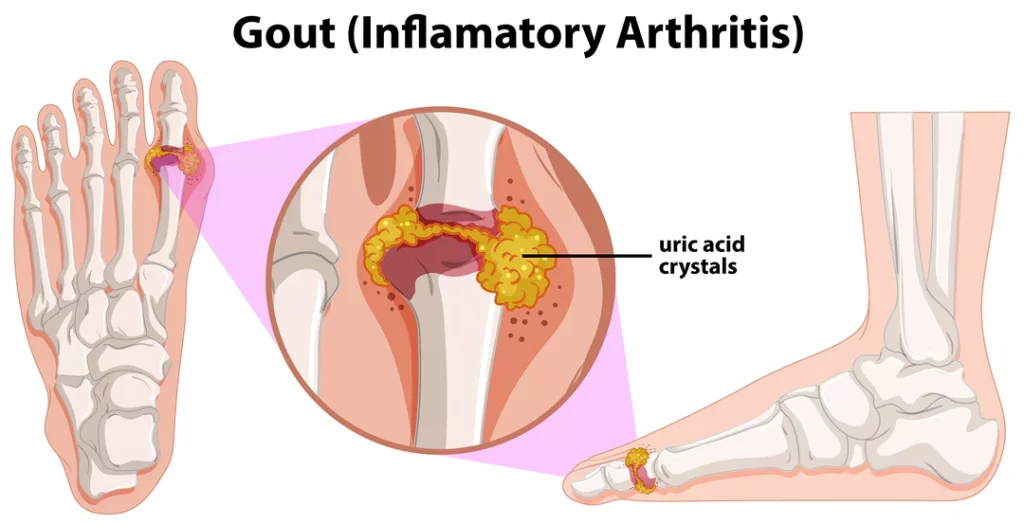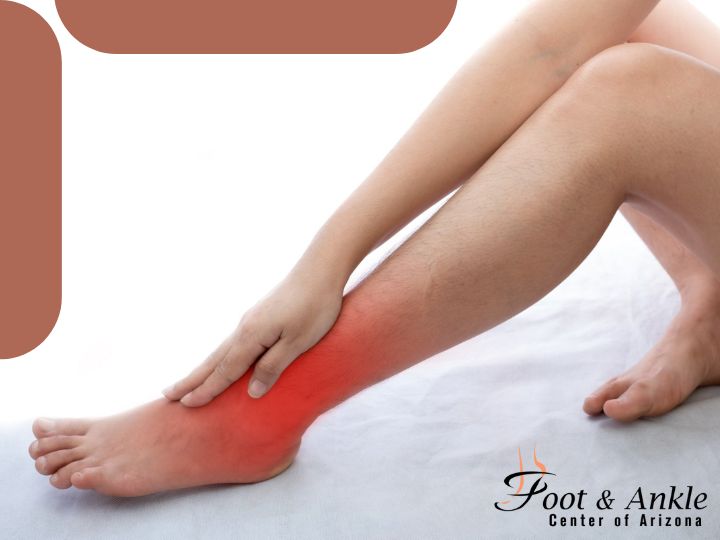What Is Gout?
Gout is a condition characterized by the accumulation of uric acid in the tissues or joints, frequently affecting the joint of the big toe.
Causes
Gout attacks stem from the deposition of crystallized uric acid in the joints. While uric acid is typically present in the blood and eliminated in the urine, individuals with gout experience an accumulation and crystallization of uric acid. Uric acid arises from the breakdown of purines, naturally occurring chemicals found in the body and in certain foods. Factors such as impaired kidney function or excessive production of uric acid can contribute to the development of gout.
The condition commonly affects the big toe due to the sensitivity of uric acid to temperature changes, leading to crystal formation at lower temperatures. Moreover, the farthest distance of the toe from the heart makes it the coolest part of the body and thus more susceptible to gout. However, gout can impact any joint.
Genetic predisposition plays a significant role in uric acid accumulation. Other risk factors include high blood pressure, diabetes, obesity, surgery, chemotherapy, stress, and certain medications and vitamins. Certain medications like aspirin, specific diuretics, and niacin can hinder the body’s ability to eliminate uric acid. Although more prevalent in men aged 40 to 60, gout can also occur in younger men and women.
Consumption of foods high in purines can trigger gout attacks. Some purine-rich foods are linked to increased uric acid levels, exacerbating gout. To reduce the risk of gout attacks, it is advisable to limit or avoid intake of shellfish, organ meats, red wine, beer, and red meat.
Symptoms
Gout attacks are characterized by the following symptoms:
- Sudden, intense pain, often occurring at night or upon waking
- Signs of inflammation, such as redness, swelling, and warmth around the joint
Diagnosis
To diagnose gout, a foot and ankle specialist will inquire about personal and family medical history, followed by a joint examination. Additional laboratory tests and X-rays might be necessary to rule out other potential causes of inflammation.
Treatment
Initial treatment for a gout attack typically includes:
- Medications: Prescription drugs or injections to alleviate pain, swelling, and inflammation
- Dietary adjustments: Avoiding purine-rich foods and beverages, as purines convert to uric acid in the body
- Hydration: Consuming ample water and fluids daily while refraining from alcoholic beverages to prevent dehydration
- Immobilization and elevation of the foot: Resting the foot by refraining from standing and walking, along with elevating the foot to minimize swelling
With treatment, gout symptoms, and the inflammatory process typically resolve within three to ten days. If symptoms persist or if recurrent attacks occur, consulting a primary care physician for ongoing treatment, possibly involving daily medication, is recommended. In cases of frequent episodes. Addressing the underlying issue is crucial, as prolonged uric acid buildup can lead to joint damage.





